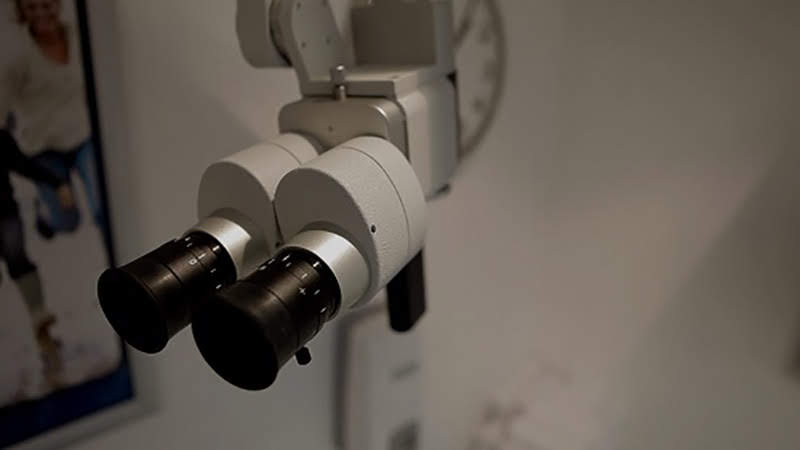Can Ear Wax Removal Cause (Insert Relevant Term Here)?
We have had a fair few questions about earwax removal and its effects. So I thought it was a good idea for us to write an article that answered as many questions as possible. So here goes, this as always isn't a definitive list of questions answered, but if you have any others, just contact us and we will do our best to answer. The questions and answers here are relevant to both micro-suction earwax removal and irrigation ear wax removal.

Are ear wax removal drops safe?
I suppose it depends, if you are talking about the earwax drops you buy in a chemist, well then the answer is yes. The companies that manufacture the oil take great care to ensure that it is inert. In essence, they boil the oil to make sure that there are no living organisms in it that may make a home in your ear. If you are making your own with olive oil or almond oil, boil it first, then let it cool and bottle it. Likewise, over the counter ear drop solutions with hydrogen peroxide are carefully controlled. They are usually no more than 2 to 3% hydrogen peroxide.
Are ear wax removal kits safe?
If you are talking about the ones you can buy in a chemist, I would have to say yes, however, follow the instructions carefully. If there is a bulb syringe type device with it, be careful of how much pressure you use on it. This method of removing wax can be dangerous, if you introduce the water to your ear canal under too much pressure, you can burst your eardrum. Very painful, very messy and will damage your hearing. So be careful how hard you squeeze the bulb syringe, harder is most definitely not better!
Are ear wax removal candles (Hopi Candles) safe?
The answer to that is a resounding no, not only are they not safe, they actually don't help to remove earwax. You can read more about Hopi ear candles here. Honestly, just don't do it, people who offer these ear candles make ridiculous claims about them with no hard scientific backing. Put simply, they don't work.
Do ear wax removal drops work?
Generally, oil-based ear wax removal drops simply soften the ear wax that is in the canal. While this may lead to the ear wax making its own way out of the canal, more often than not, it won't. Hydrogen peroxide-based drops are different, hydrogen peroxide should begin to break up the ear wax in the canal. When you allow the hydrogen peroxide mixture to drain out of the ear canal, it should bring some of the ear wax with it. Having said that, it may not remove all of it.
Is ear wax removal safe?
Depends on what you are asking about, for instance, are Hopi Ear Candles safe or is ear syringing safe? The answer is no, they certainly aren't. However, if you are asking is micro-suction earwax removal, manual earwax removal or irrigation ear wax removal undertaken by a professional safe? Well then the answer is yes, they are safe procedures when undertaken by a professional.
Is microsuction ear wax removal safe?
In general, ear wax removal by micro-suction is a safe procedure, however, as with any medical procedure, there are things that may go wrong. The risks are as follows:
- Damage to or infection of the skin of the ear canal or the eardrum
- The procedure is noisy and may cause a temporary shift in your hearing thresholds
- The procedure may start or aggravate any existing tinnitus.
- The procedure may cause temporary dizziness or discomfort
You can read the full answer to this question in our Q&A Faqs article named funnily enough "Is Ear Wax Removal By Microsuction Dangerous?"
Is home ear wax removal safe?
Yes, no, maybe? This is a difficult question to answer, it depends on what you are going to do. If you plan on shoving an implement deep in your ear canal in an effort to remove wax, well then I would say HELL NO! If you are planning to use hydrogen peroxide mix followed by irrigation with a bulb syringe, well then I would say maybe. If you are going to try to remove ear wax at home, get a kit in a chemist and follow the instructions carefully.
Can earwax removal help an ear infection?
This is a tricky one, yes it could, but it needs to be undertaken by a professional and it needs to be done with micro suction. Let me explain, sometimes with an ear infection, there is effusion, basically, sticky fluid which may end up in the ear canal if the eardrum perforates. Removal of this infected material can only be good for you. An ENT (Ear Nose and Throat Specialist) may decide to remove this from your ear canal to promote healing. If that decision is made, the stuff will be sucked out using micro suction.
Can earwax removal cause tinnitus?
Yes and no, ear wax removal procedures may exacerbate existing tinnitus or it may cause some tinnitus, however, both effects are short-lived and will subside. So no, ear wax removal methods cannot cause long-term tinnitus.
Can ear wax be removed with hydrogen peroxide?
Hydrogen peroxide can be used for home earwax removal, however, you need to be very careful. The solution of hydrogen peroxide should not be any more than 2 to 3%. We wrote a whole article about hydrogen peroxide and earwax removal which you can read here.
Can earwax removal help tinnitus?
Yes, it can, ear wax can occlude the ear canal which can cause the perception of tinnitus or make existing tinnitus even worse. So removing that ear wax will help to relieve tinnitus in these cases.
Can earwax removal cause bleeding?
In general, irrigation earwax removal (done with a special pumped water machine) would not cause bleeding, or at least never in my experience. However, I have heard of cases where the ear canal was pinched during micro-suction which caused a small bleed. I have also heard of the canal being grazed during manual earwax removal which again may cause a bleed. So, the answer is yes, but in general, it is a small problem which will not cause any discomfort.
Can earwax removal cause hearing loss?
I had never heard this one until recently, however, earwax removal undertaken by a professional may cause a slight temporary hearing loss, but only in very rare cases. The temporary loss is called a temporary threshold shift and it may happen in response to noise within the ear canal while the earwax is being removed. If you are mad enough to try to remove earwax yourself, well then you could certainly give yourself a more permanent hearing loss by bursting your eardrum or even damaging the bones in your middle ear, Don't do it.
Can earwax removal cause damage?
This one is a bit general really, however, I think any medical procedure has the possibility of going wrong. Having said that, in my experience, I have never seen or heard of any damage done to a Patient's ear during an ear wax removal procedure undertaken by a professional. Earwax removal undertaken by someone who doesn't really know what they are doing is a different matter, I revert to my previous statement, just don't do it.
Can earwax removal cause vertigo?
Vertigo is actually severe and chronic dizziness, so no, earwax removal shouldn't cause vertigo, however, ear wax removal by irrigation may cause some dizziness. Sometimes when water is introduced to the ear canal it can cause dizziness, particularly if the water is cold.
Can earwax removal cause dizziness?
Yes, it can, irrigation earwax removal undertaken with water that is too cold can cause dizziness. In fact, during balance testing, we use cold water against the eardrum to induce dizziness. That is why we are very careful to ensure that the water we use to remove earwax is at a very precise temperature.
Can earwax removal cure tinnitus?
Yes, it can, but only if the earwax buildup has caused the tinnitus in the first place.
Can earwax removal improve hearing?
Again, yes it can, but it will only reverse the hearing loss that was caused by the earwax buildup in the first place.
Does ear wax removal hurt?
Earwax removal undertaken by a professional really shouldn't, it might cause some discomfort, especially irrigation because your ear canal is full of water, however, it should not cause real pain. If it does, something has probably gone wrong.
Does ear wax removal work?
Yes, it is very effective, not really sure where this one came from, to be honest. Again the caveat is going to a professional. Although in fairness, I have seen people arrive at my clinic who have allegedly had earwax removed a couple of months before that simply couldn't have. When earwax is old it is black and hard.
I have had people turn up with black hard earwax in their ears who had earwax removed a couple of months before. The job was not done correctly, it simply couldn't have been or black hard earwax would not be in their ear canals.
Which ear wax removal is the best?
That's a hard question, many people like micro-suction and it is most definitely the fashionable procedure right now. However, I personally like irrigation, mainly because it washes everything out. With micro-suction, there may be some wax near the eardrum or on the canal wall left.
However, having said all of that, if you have ever had a perforation of your eardrum, you are probably better off going for micro-suction. The last thing you want is water in your ear canal if there is any chance that you might have an active perforation in your eardrum.
How does ear wax removal work?
Microsuction ear wax removal is undertaken using a specialist medical suction pump attached to a very thin cannula (probe). The professional will use either an ENT Microscope with a light source or a set of surgical loupes with a light source to see into your ear canal. They will introduce the cannula to your ear canal and gently suck the wax out. The procedure normally doesn't take that long, although it depends on the amount of ear wax in there.
Irrigation ear wax removal is undertaken with a specialist medical water pump. This type of procedure has replaced syringing because it is much safer. The water pump pressure is controlled so that there can never be too much water pressure in the ear canal. The professional will use a headlight to illuminate your ear canal and then introduce the washing probe to your ear. They will then begin spraying the water into your ear canal. The water is aimed at the top of your ear canal and slightly towards the eardrum. This slowly washes away the ear wax and it is caught in a tank as it washes out.
As I said, this isn't a full question and answer article, but I think it covers most of the questions about earwax we get asked, If you have any question that I haven't covered, get in touch with us at info at hearingaidknow.com. If you are looking for earwax removal near you, take a look at the trusted providers associated with us.
Looking For Ear Wax Removal in The UK or Ireland
Find An Earwax Removal Specialist in Your Area
If you like what you see, share it so others can benefit
Posted by Geoff

Geoffrey Cooling





Geoffrey (Geoff, anything else makes him nervous) Cooling is an Irish hearing aid blogger and has been involved with the hearing aid industry for over ten years. He has worked in private practice dispensing hearing aids and as a manufacturer's rep. He has written two books and they are both available on Amazon. He loves technology, passing on knowledge and is legendary for many other things, primarily the amount he curses, his dry and mischievous sense of humour and his complete intolerance of people who are full of themselves. Please feel free to connect with him
Looking For the Latest Hearing Aids or A Hearing Test?
Arrange a consultation with a trusted Independent hearing healthcare professional in your area



